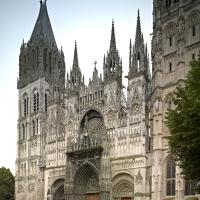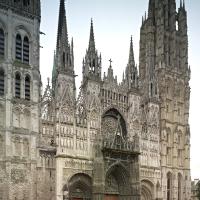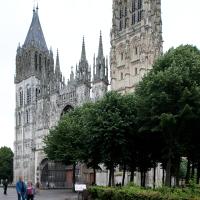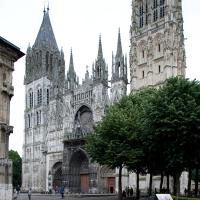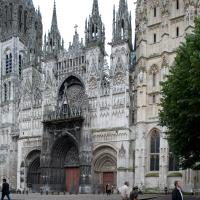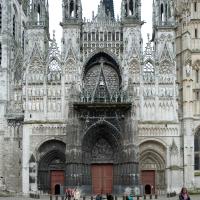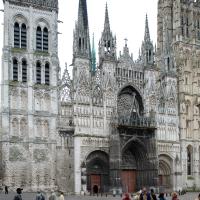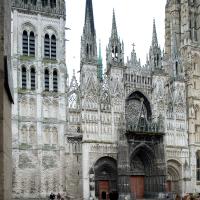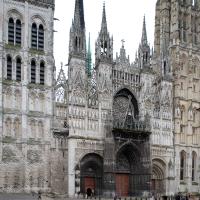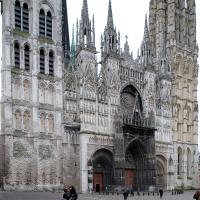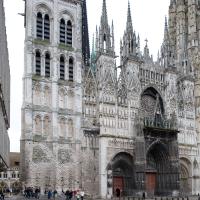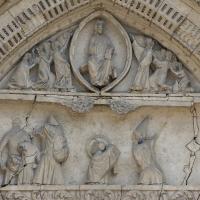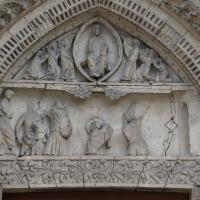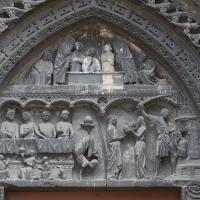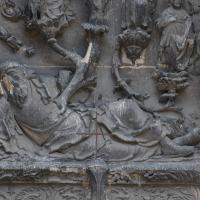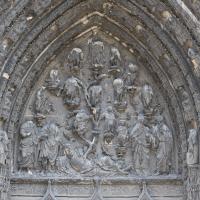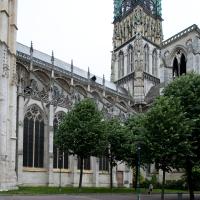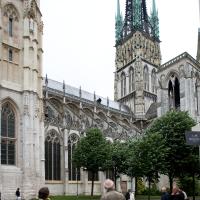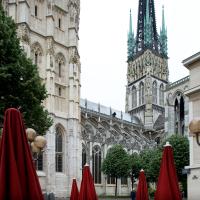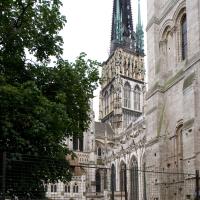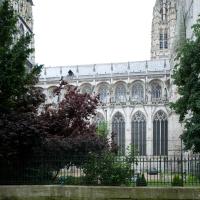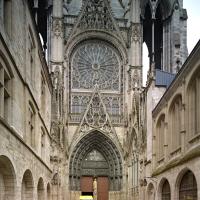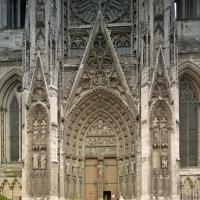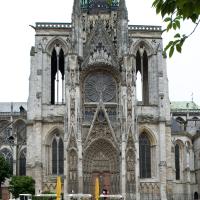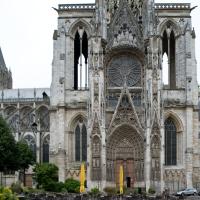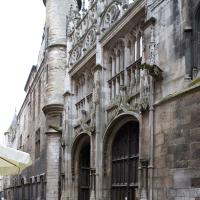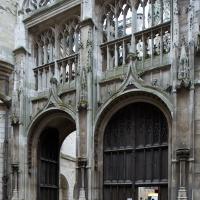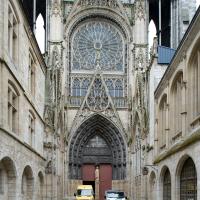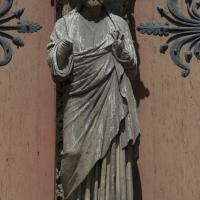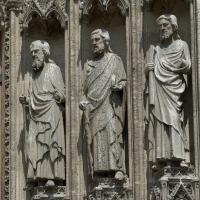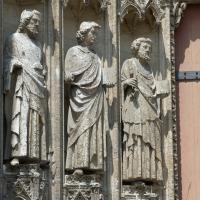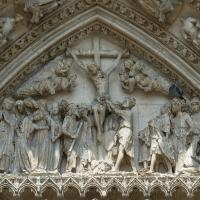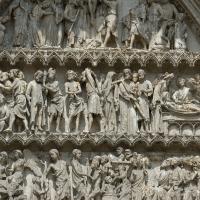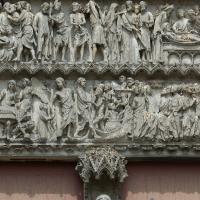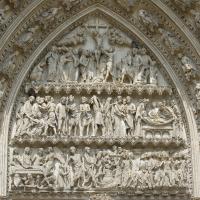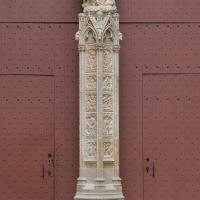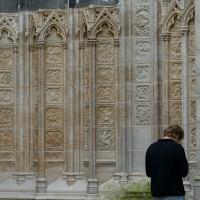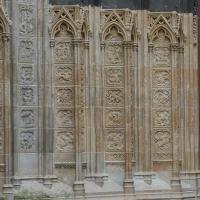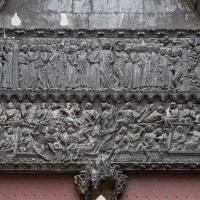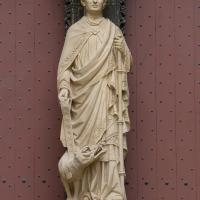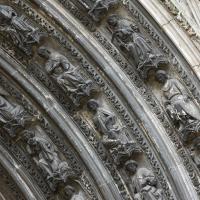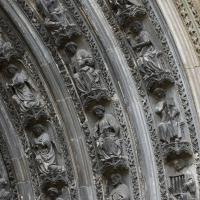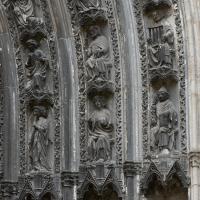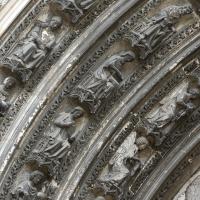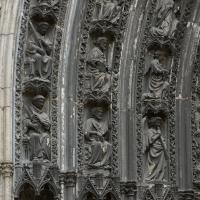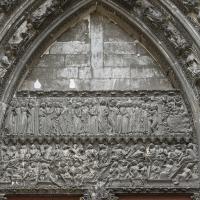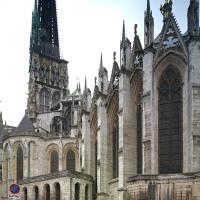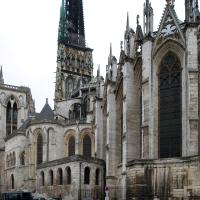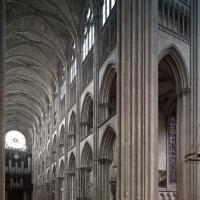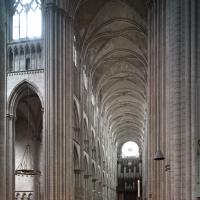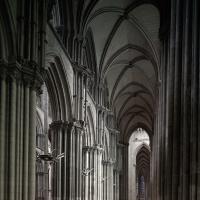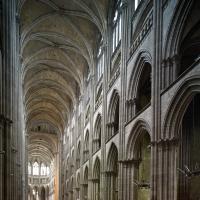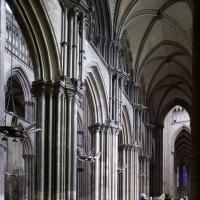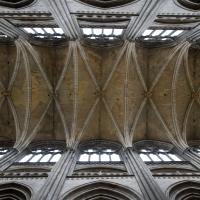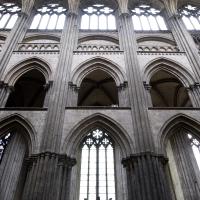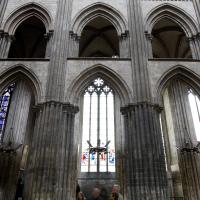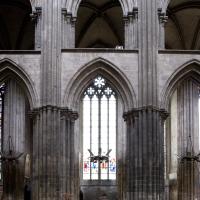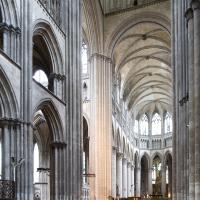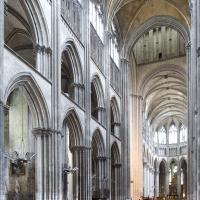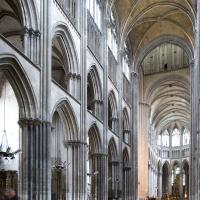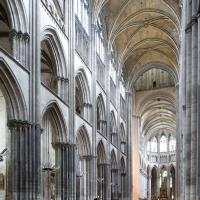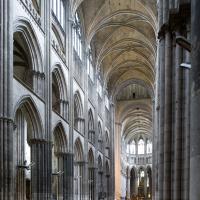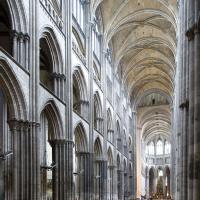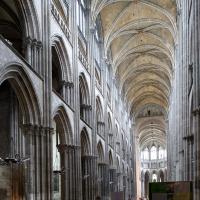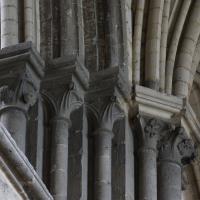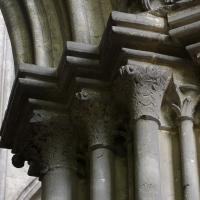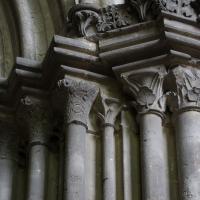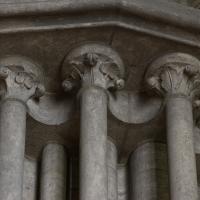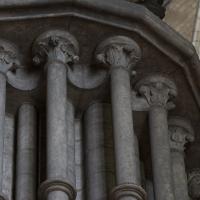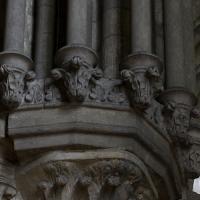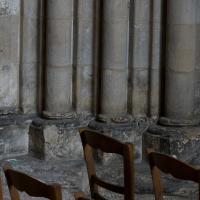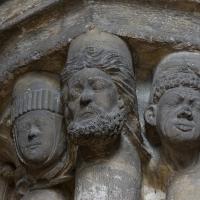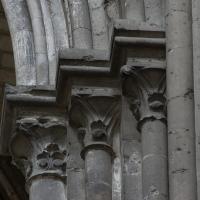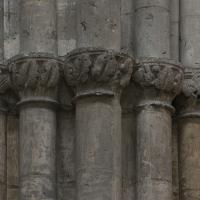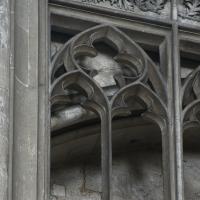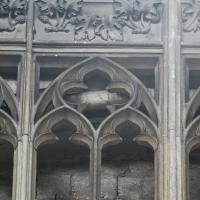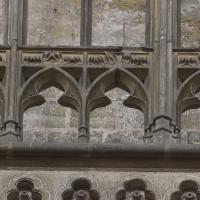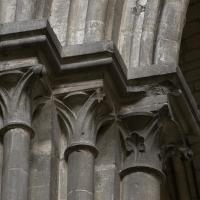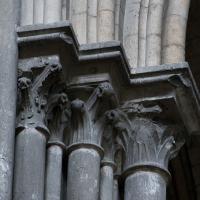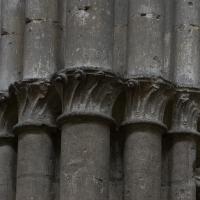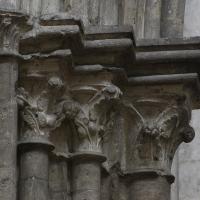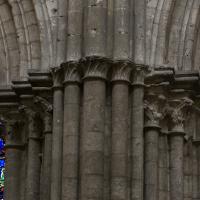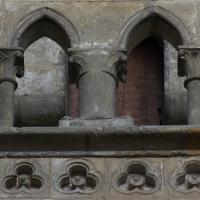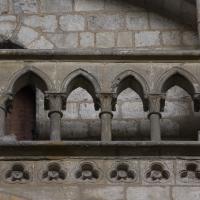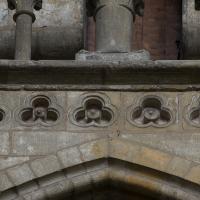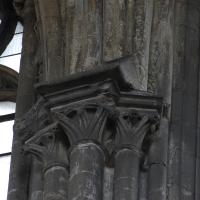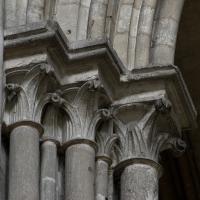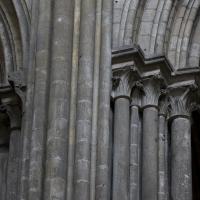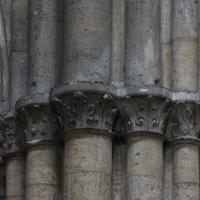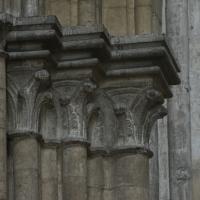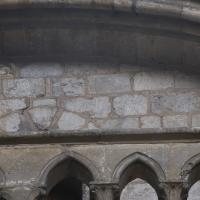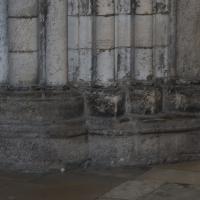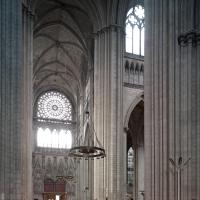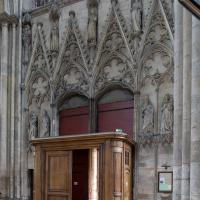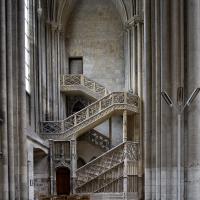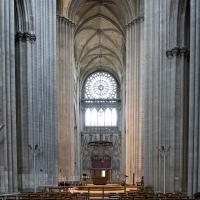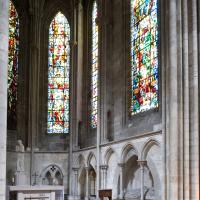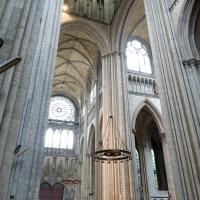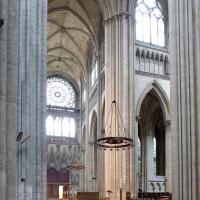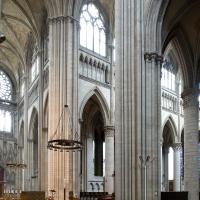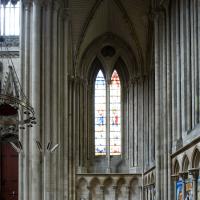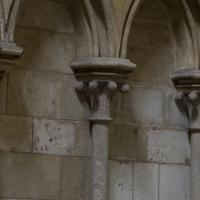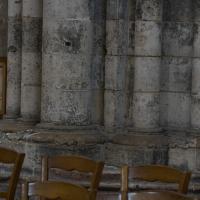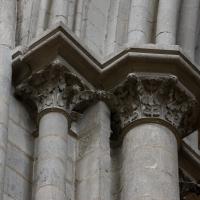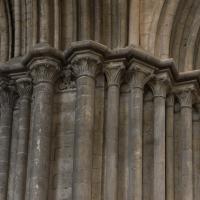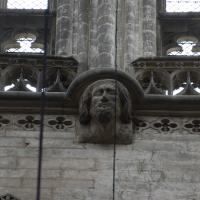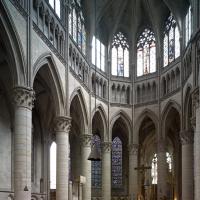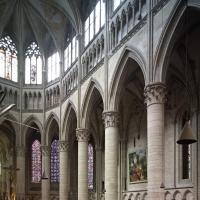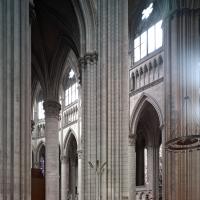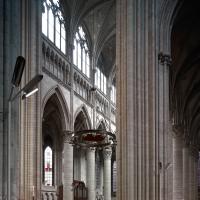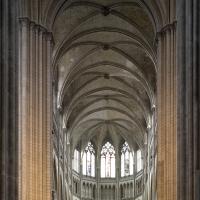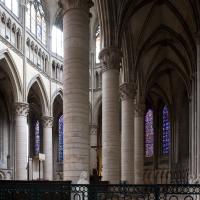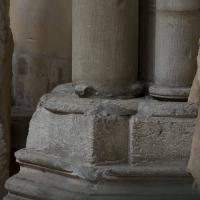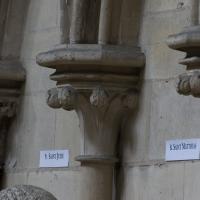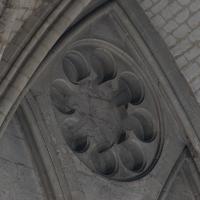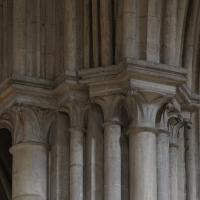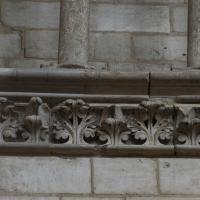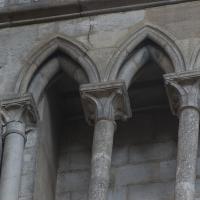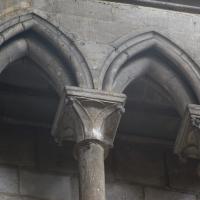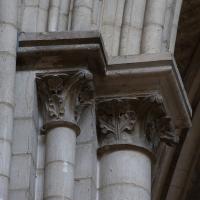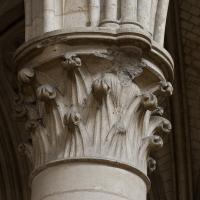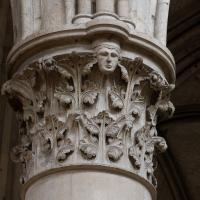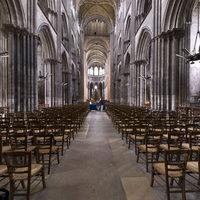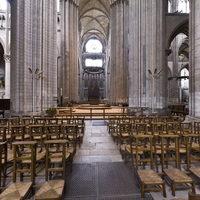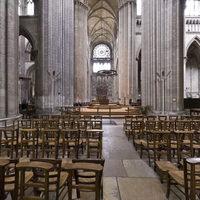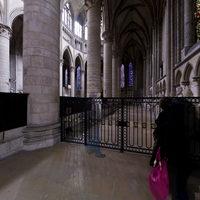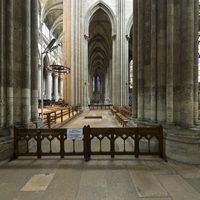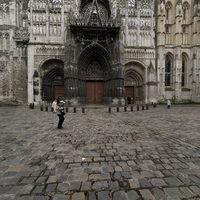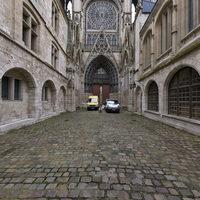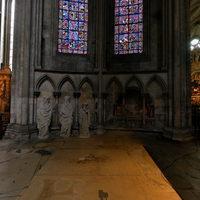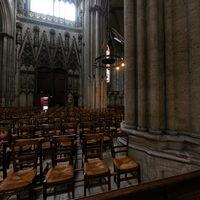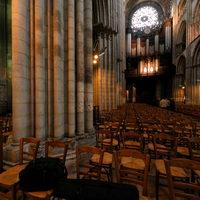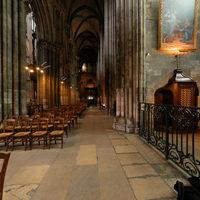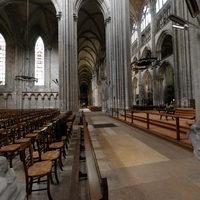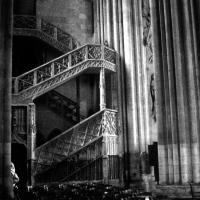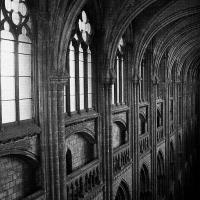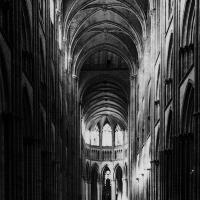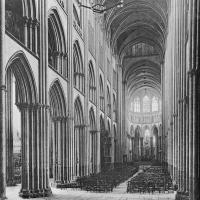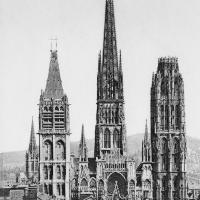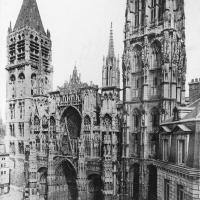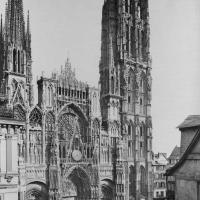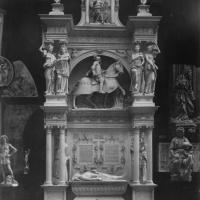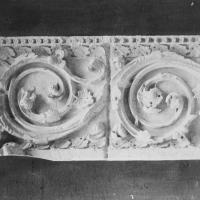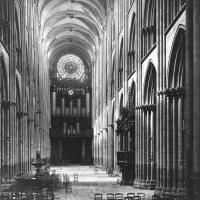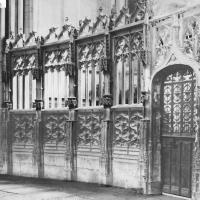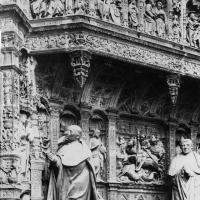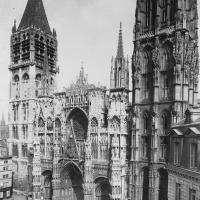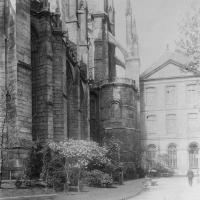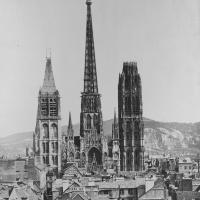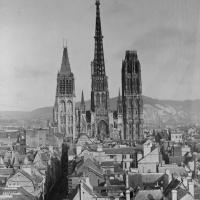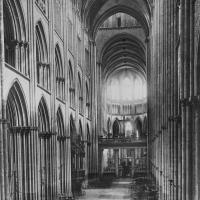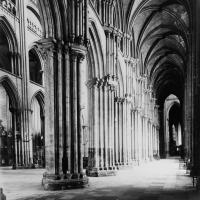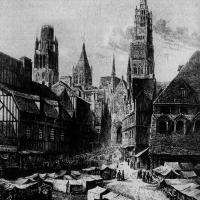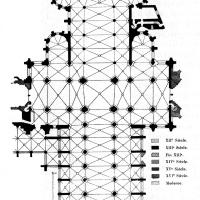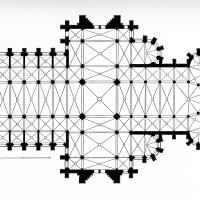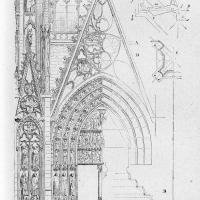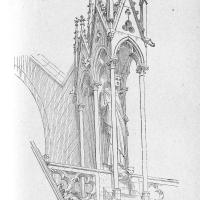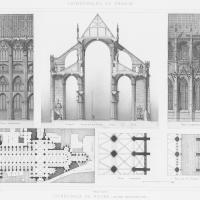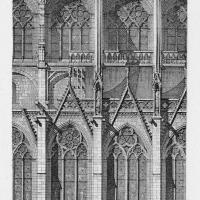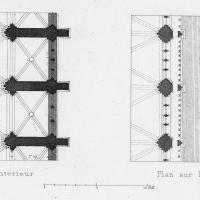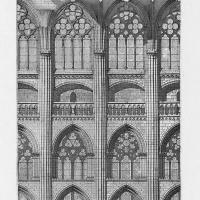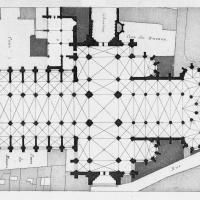Images
VR Tour
Notes
History
The Roman city, Rotomagus, on the right bank of the Seine, retained its prosperity and size (100 hectaires) even in the Late Empire when it was fortified under the Emperor Gratien. Urban growth in the 11-12thth centuries led to the inclusion of the bourg of S-Ouen within the new wall. Of the cathedral rebuilt under Robert I towards the year 1000 and destroyed in a fire in 1200, only the crypt remains. After 1204 Rouen became a center of royal power: Philip Augustus built an enormous castle on the nearby hill of Bouvreuil; the donjon, much restored, still survives. By the thirteenth century the city population numbered around 40,000.
Date
Begun ca. 1190
Plan
A basilica with an aisled nave of 11 bays with lateral chapels added to the outer envelope. The body of the church is intersected by a deeply-projecting transept with deep apsidal chapels. East of the crossing there is a long (5-bay) chevet with a 5-segment ambulatory and three radiating chapels -- the central one, rebuilt.
Elevation
In the nave there is a four-story elevation of arcade, false gallery (ie without a floor), triforium and clerestory, while the later chevet has three stories.: a tall arcade on cyldindrical columns, a dark triforium like Soissons or Chartres Cathedra and a clerestory.
Chronology
The fabric of Rouen Cathedral embodies construction from five main periods.
1. The Tour Saint Romain, to the north of the western frontispiece, was built c.1140-50, and it is clear that important construction work continued in the second part of the 12th century.
2. c1185 Bishop Gautier le Magnifique began the reconstruction of the nave.; the old transept and chevet were retained.
3. On Easter day, 1200 a fire badly damaged the cathedral. Repairs began soon afterwards, under the direction of Master Jean d'Andeli: the nave was conserved, work continuing on the upper parts, and construction advanced into the transept, continuing into the choir by around 1220. There was a consecration (Archbishop Pierre de Colmieu) in 1237.
4. Following soon after the addition of nave chapels (1265-1275), in the last decades of the thirteenth century new transept façades were built. Work on the north transept (Portail des Libraires) was begun by Master Jean Davi c1270-1280; the south transept (Portail des Calendes) followed soon afterwards. Work seems to have been financed partly by a wealthy member of the bourgeois from Harfleur, Jean Gorren. The axial chapel of the chevet was extended after 1302 at the request of Archbishop Guillaume de Flavacourt, who provided the land. The chapel was intended for the burial of prelates.
5. Late Gothic work of refurbishing or embellishment includes the reworking of the nave clerestory under Master Jean Perier (1362-1368) who also began to add a screen of tracery to the western frontispiece. Work continued under Jean de Bayeux (1388-1398) and Jenson Salvart (1398-1447) who also transformed the choir clerestory windows. The top of the Tour Saint Romain was built by Guillaume Pontifs between 1468-1478. In 1485 the foundation stone of the new south-west Tour de Beurre was laid by Archbishop Robert de Croimare. Work on the tower, troubled with structural problems dragged on until the 1520s; more additions were made in the central area of the western frontispiece.
The central steeple was destroyed by fire in 1822 and was replaced in cast iron by the architect Alavoine. Very severe damage resulted from Allied bombing in 1944; on June 1 the city burned and much of the cathedral roof was destroyed.
Significance
The four-storey galleried elevation of the nave looks both to Norman traditions (S-Etienne of Caen b-1099) but also to more recent buildings in the Ile-de-France (Senlis Cathedral b-1050, Notre-Dame of Paris b-1164); the builders of the transept and chevet, however, constructed after the Conquest, refer to models in the Soissonais and Ile-de-France. The forms of the chevet provide an important model for Norman churches of the 13th century. The nave begins when the Plantagenets are still in control of this area. King John gave 2,000 livres to the Cathedral for rebuilding. Richard the Lionheart's heart is buried in the church. It would have been a necropolis for the Plantagenets In 1204 Chateau Galliard falls to the French King Philip Augustus and Rouen falls very quickly into the hands of the Capetians. The transept facades and axial chapel, from the early 14th century, point directly to the transept facades of Notre-Dame of Paris b-1164.
Location
Bibliography
Aubert, M, "La cathédrale," in Cong arch., 89, 1927, 11-71
Carmen-Lanfry, A. M., La cathédrale Notre-Dame de Rouen, Rouen, 1977
Desportes, J-Ph., "Alavoine et la flèche de la cathédrale de Rouen," Revue de l'Art, 13, 1971, 48- 62.
Deville, A., Revue des architectes de la cathédrale de Rouen, Rouen, 1848.
Grant, L., "Rouen Cathedral, 1200-1237," Medieval Art, Architecture and Archaeology at Rouen, The British Archaeological Association, 12, 1993, 60-68.
Jouen, Chanoine, La cathédrale de Rouen, Rouen, 1932.
Krohm, H., Die Skulptur des Querhausfassaden an der Kathedrale von Rouen, Aachen, 1971
Lanfry, G., La cathédrale de Rouen depuis quinze siècles au coeur de la cité, Rouen, 1963
Lescroart, Y., Rouen, la cathédrale Notre-Dame, CNMH, 2000.
Loth, abbé Julien, La cathédrale de Rouen. Son histoire, sa description depuis les origines jusqu'à nos jours, Rouen, 1879.
Loisel, Chanoine, La cathédrale de Rouen, 1910.
Schlicht, M., La cathédrale de Rouen vers 1300: un chantier majeur de la fin du Moyen Age: portail des Libraires, portail des Calendes, chapelle de la Vierge, Caen, 2005.




